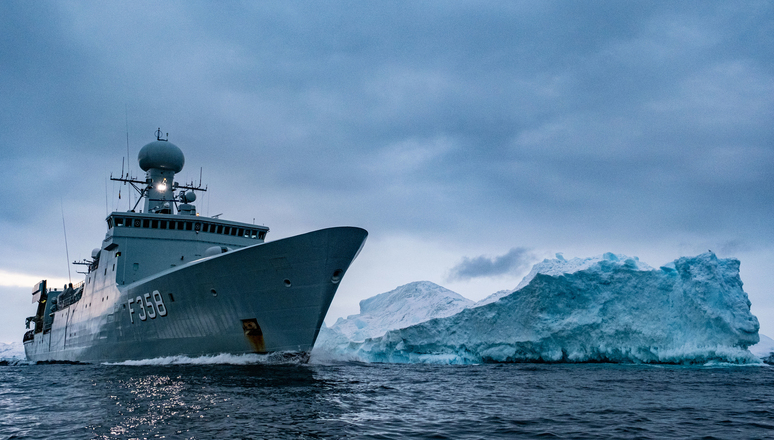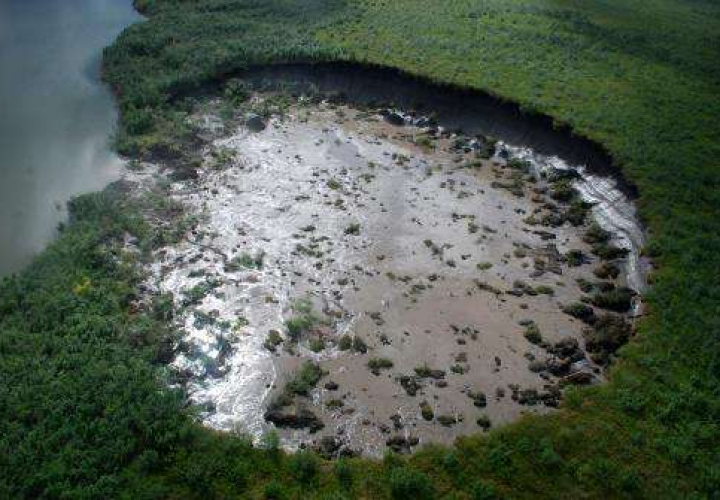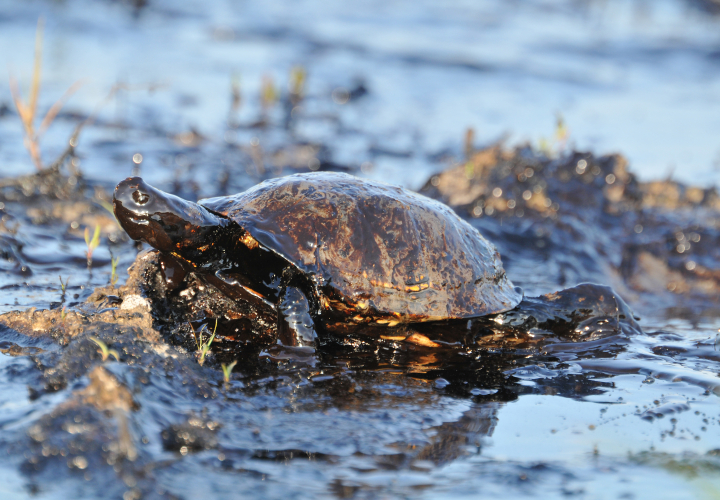
How climate changes is effecting peace, security and defense sectors
To date, European concerns due to climate change focus on the sectors of peace, security, and defence.
“Our peace and security depend on robust climate and environmental policies,” as clarified by the High Representative Borrell, pointing out that “climate change is also changing the way member states' defence forces plan, invest and operate.”
The challenges that Europe is facing are extreme weather events, such as rising temperatures and sea levels, desertification phenomena, water scarcity, and environmental contamination, which are allowing not only the onset of ever-increasing migration flows, but also social unrest and conflicts.
Europe under attack from extreme weather events: drought and high rainfall
As a matter of fact, only in Europe, more than 61,000 people died in summer 2022 due to high temperatures. Despite the fact that the global temperature increased by 1.1 degrees, there was a rise ranging from an additional 2.33 degrees to 3.56 degrees in Europe in June 2022.
Thus, while on the one hand there have been problems due to drought, which is generating great concern for the water supply that is essential for agriculture and energy production, on the other hand, according to IPCC predictions, climate change will cause a 10 to 40 percent increase in water availability in higher latitudes, as well as sea level rise that is now already affecting 15 of the 20 megacities in the world such as Buenos Aires, Cairo, Mexico City etc. which are becoming flood-prone areas.
But it is also crucial to remember how the impact of climate change is also realized through changes in rainfall regimes. Indeed, the rainfall in the coming weeks will be decisive in determining the course of the drought, but at the same time it should be taken into account that it is already for 2 months now that Europe has been subject to incessant storms completely destroying several cities, mostly located in the Italian regions of Emilia-Romagna, Tuscany and Abruzzo. This is the result of rising temperatures causing the evaporation of much more water than usual which comes into contact with colder and wetter currents, resulting in the creation of torrential rains.
Climate change implications on food security
This obviously has a major impact on agricultural production, by reducing the yields of corn and wheat crops, against a demand that is instead growing due to the desertification phenomena affecting mainly Africa and the more arid and semi-arid areas of the world. Consequently, more and more farmers are moving away from food production towards the biofuel industry, contributing to rising food prices.
The adaptation capacity to food security challenges differs among countries, depending on their economic peculiarities and their role in the international market. Countries such as Brazil or Australia, which conduct mechanized agriculture, are better prepared to deal with climate change than countries whose production is based on small-scale subsistence farming.
That is why countries such as Saudi Arabia, South Korea, and China, due to the lack of cultivable land where to expand production, have begun to invest in farmlands abroad, such as in Europe, in order to strengthen their food security, but thereby giving rise to conflicts over supplies, a phenomenon observed especially in Brazil, Iraq, Syria, Turkey, and the Horn of Africa, because they are characterized by the presence of large rivers.
Climate change and migration: a pair that goes hand in hand
What is evident is that these instability factors are constantly being exploited by criminal networks or corrupt regimes, thereby putting populations in the position of being forced to migrate. Therefore, international migration is a phenomenon that is worrying several countries with high-income economies, particularly Europe in which the incidence of illegal migration flows is expected to increase, associated with greater instability along the borders with a decisive impact on energy supplies and a greater spread of diseases related to climate change, with the risk also of exporting the conflicts of which they are protagonists in their countries of origin.
Conclusion
In an increasingly globalized and interconnected world where the space-time dimension is shrinking and in response to growing geopolitical competition for the resources and technologies needed for the green transition, a supranational and multilevel response is needed. This is exactly why the European is committed to consolidating some international partnerships and breaking up others, such as with Moscow, not only as a result of the war in Ukraine but also in favour of a more self-sufficient and independent approach to energy production.
Another successful initiative put into practice by Europe is the creation of a climate and environmental security data and analysis hub within the EU Satellite Center, through the deployment of environmental advisors in defence operations, as well as establishing national and EU-wide training platforms aimed at developing in-depth studies on vulnerable geographic areas such as the Sahel or the Arctic.
Of paramount importance will also be the alignment of the defence sector, since European armed forces will have to cope with changing operational conditions due to climate change, by trying to reduce their gas emissions and dependence on fossil fuels as much as possible.






 English
English العربية
العربية Български
Български 简体中文
简体中文 繁體中文
繁體中文 Hrvatski
Hrvatski Čeština
Čeština Dansk
Dansk Nederlands
Nederlands Suomi
Suomi Français
Français Deutsch
Deutsch Ελληνικά
Ελληνικά हिन्दी
हिन्दी Italiano
Italiano 日本語
日本語 한국어
한국어 Norsk bokmål
Norsk bokmål Polski
Polski Português
Português Română
Română Русский
Русский Español
Español Svenska
Svenska Català
Català Filipino
Filipino עִבְרִית
עִבְרִית Bahasa Indonesia
Bahasa Indonesia Latviešu valoda
Latviešu valoda Lietuvių kalba
Lietuvių kalba Српски језик
Српски језик Slovenčina
Slovenčina Slovenščina
Slovenščina Українська
Українська Tiếng Việt
Tiếng Việt Shqip
Shqip Eesti
Eesti Galego
Galego Magyar
Magyar Maltese
Maltese ไทย
ไทย Türkçe
Türkçe فارسی
فارسی Afrikaans
Afrikaans Bahasa Melayu
Bahasa Melayu Kiswahili
Kiswahili Gaeilge
Gaeilge Cymraeg
Cymraeg Беларуская мова
Беларуская мова Íslenska
Íslenska Македонски јазик
Македонски јазик יידיש
יידיש Հայերեն
Հայերեն Azərbaycan dili
Azərbaycan dili Euskara
Euskara ქართული
ქართული Kreyol ayisyen
Kreyol ayisyen اردو
اردو বাংলা
বাংলা Bosanski
Bosanski Cebuano
Cebuano Esperanto
Esperanto ગુજરાતી
ગુજરાતી Harshen Hausa
Harshen Hausa Hmong
Hmong Igbo
Igbo Basa Jawa
Basa Jawa ಕನ್ನಡ
ಕನ್ನಡ ភាសាខ្មែរ
ភាសាខ្មែរ ພາສາລາວ
ພາສາລາວ Latin
Latin Te Reo Māori
Te Reo Māori मराठी
मराठी Монгол
Монгол नेपाली
नेपाली ਪੰਜਾਬੀ
ਪੰਜਾਬੀ Afsoomaali
Afsoomaali தமிழ்
தமிழ் తెలుగు
తెలుగు Yorùbá
Yorùbá Zulu
Zulu ဗမာစာ
ဗမာစာ Chichewa
Chichewa Қазақ тілі
Қазақ тілі Malagasy
Malagasy മലയാളം
മലയാളം සිංහල
සිංහල Sesotho
Sesotho Basa Sunda
Basa Sunda Тоҷикӣ
Тоҷикӣ O‘zbekcha
O‘zbekcha አማርኛ
አማርኛ Corsu
Corsu Ōlelo Hawaiʻi
Ōlelo Hawaiʻi كوردی
كوردی Кыргызча
Кыргызча Lëtzebuergesch
Lëtzebuergesch پښتو
پښتو Samoan
Samoan Gàidhlig
Gàidhlig Shona
Shona سنڌي
سنڌي Frysk
Frysk isiXhosa
isiXhosa
Terms & Conditions
Subscribe
Report
My comments